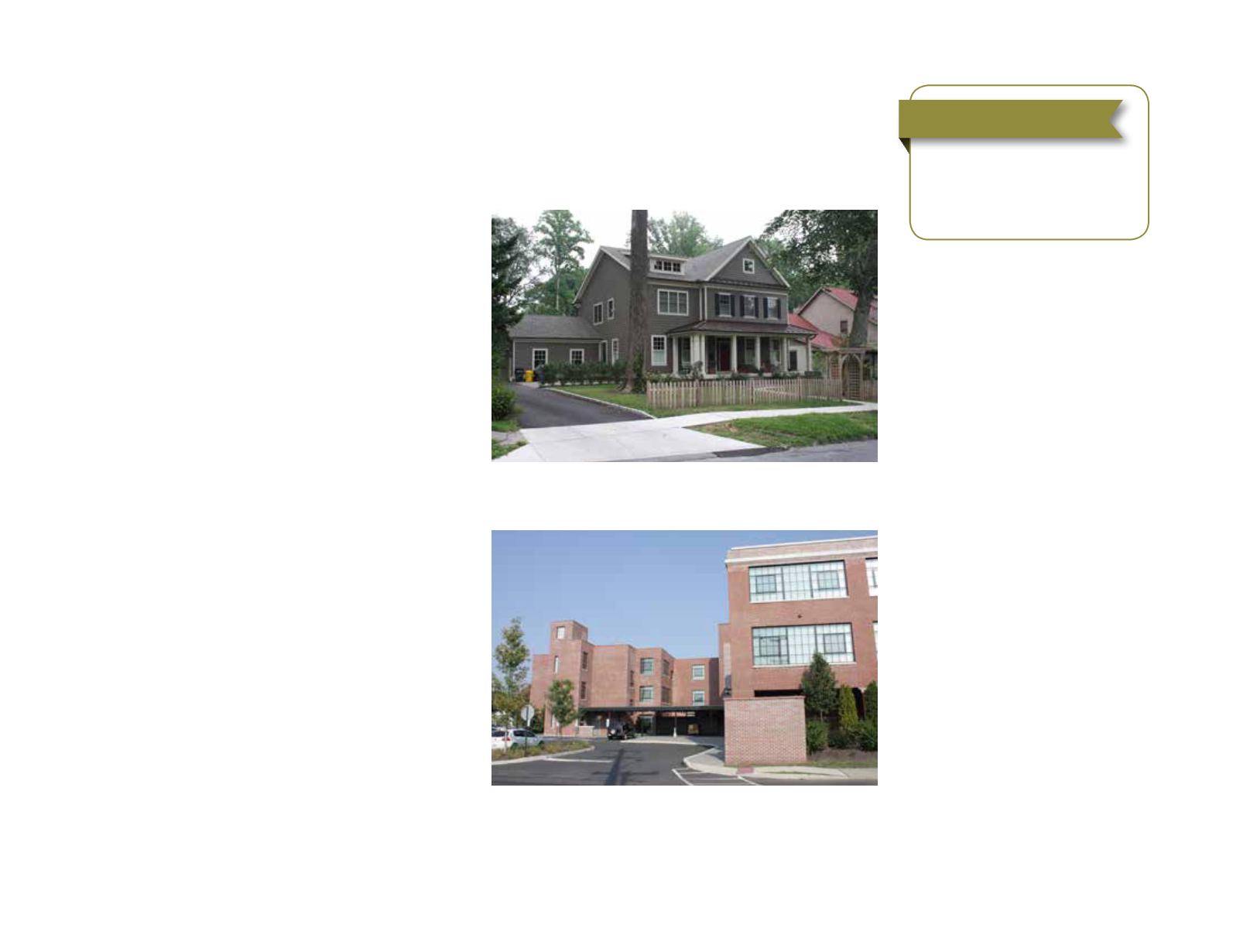
Montco 2040:
a shared vision
57
...advocate with local municipalities and developers for appropriate land uses, infill development,
and public improvements
As the county has become more developed and as interest in more urban or mature suburban locations has increased, infill
development and redevelopment in existing neighborhoods has increased. This infill development should respect the character
of existing residential communities and minimize the impact of new development on neighboring developed properties.
■■ Percent of new
development occurring as
infill
Measuring success
This can be done by:
■■ Adopting Traditional Neighborhood Development or
Form Based Zoning.
■■ Incorporating standards that regulate the scale and design
of infill development. These might include requirements
on the footprint, height, and width of buildings;
requirements for porches, roofs, windows, and doors that
are similar to nearby homes; or requirements that garages
be in the back of homes.
■■ Locating industrial, car-oriented, and heavy commercial
uses away from residential neighborhoods.
■■ Encouraging adaptive reuse of old industrial and
institutional buildings that add to the character of
a community.
■■ Controlling the lighting, loading, outdoor storage, and
trash areas of commercial uses and requiring buffer
landscaping next to residential properties.
■■ Encouraging redevelopment of vacant and
underutilized properties with poor maintenance
into new, compatible uses.
■■ Installing traffic calming, sidewalks, and crosswalks to
improve walkability.
■■ Continuing to invest in local parks.
■■ Recognizing exemplary developments through awards
programs, like the county’s Montgomery Awards.
New infill housing can match the character of existing
neighborhoods.
Adaptive reuse of vacant buildings improves neighborhoods.


